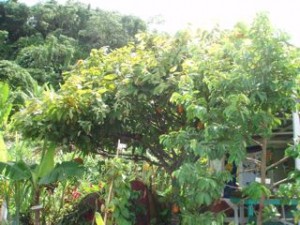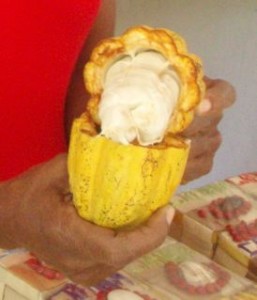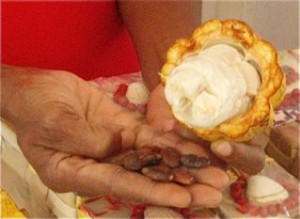 Chocolate, pink or red hearts, pink or red roses, and angels or cupids–what do they all have in common? Their association with none other than Valentine’s Day!
Chocolate, pink or red hearts, pink or red roses, and angels or cupids–what do they all have in common? Their association with none other than Valentine’s Day!
Once again, Valentine’s Day is upon us and we thought it might be an appropriate time to talk a little bit about chocolate.
US marketers are delighted that chocolate and Valentine’s Day have been successfully and inextricably linked for so many decades now.
In 2012, the National Confectioners Association reported that ~70+ percent of candy sales associated with Valentine’s Day were specifically just for chocolate. It is a retail category where last minute buying is not that uncommon now nor in the past.
What is it about chocolate that draws people to it? What benefits besides sensory enjoyment might chocolate hold for any of us?
While some folks are allergic to ingesting chocolate, others express true enjoyment of anything chocolate stating there is nothing else quite like it.
Certain forms of chocolate (not white or pastel chocolate confectionery coatings) can evoke an emotional response that has had researchers wondering for some time now if it should continue to be classified as a food item, or because of its potential effects on people if it should be thought of as more of a drug instead?
Those who like chocolate exhibit reactions to it that can be quite passionate.
 Love is a term associated with deep emotional connections and bonds between animal species.
Love is a term associated with deep emotional connections and bonds between animal species.
Love is a term that probably shouldn’t be associated with food, but often people use the term to describe an incredibly strong liking of a food item.
Valentine’s Day highlights certain aspects of a romantic connection and bond between humans. Add into the mix an element of chocolate flavor and it is a bit like adding fuel to a fire–sparks may and often do fly!
Either true forms of chocolate or the cocoa powder it is made from originating in the cacao bean have fascinated generations of people the world over for hundreds of years.
Nonetheless, we’ve noted a lot of changes in the chocolate landscape in just our own lifetime.
A Little Background Involving Cacao Trees
It’s been just over a year since we’re back from visiting the “spice island” of Grenada and checking out various sensory elements there, including some cacao trees growing on the island. (See our blog entry for A Sensory Visit to the Isle of Spice). We made a point when visiting that island to do some trekking up into the beautiful hills there to see what was growing. That land continues to recover from devastating hurricanes in 2004 & 2005. Cacao trees are indeed making a steady comeback on that beautiful island, which is rich in volcanic soil.
 The manufacturing of chocolate is dependent upon cacao trees fruiting with their cacao pods which contain seeds (also called beans) located in various regions around the world. Most cacao trees are grown on small family farms (90% of such farms are under 12 acres in size).
The manufacturing of chocolate is dependent upon cacao trees fruiting with their cacao pods which contain seeds (also called beans) located in various regions around the world. Most cacao trees are grown on small family farms (90% of such farms are under 12 acres in size).
A cacao tree must be some 5-6 years old before it can bear fruit and each tree typically only bears about 30 usable pods per year. Most pods contain between 20-50 seeds each, meaning optimally only ~1,000 beans/year. It takes approximately 400-500 beans to produce 1 pound of bittersweet chocolate or the equivalent of 2 pounds of any type of sweet chocolate.
Cacao trees need very specific climate conditions in order to thrive. They can only be planted in a band around the equator that stretches from 20 degrees north to 20 degrees south. (If we remember correctly, Grenada is about 12 degrees north of the Equator). Cacao trees are often referred to as understory trees because they thrive with taller trees adjacent to them providing leaves to protect the cacao tree from both direct sunlight as well as high winds. Disease and pests that cacao trees are susceptible to result annually in the loss of some 1/3 of the world’s crop of cacao beans.
All of us owe the opportunity to enjoy cocoa powder as well as various types of chocolate to the different varieties of cacao trees that produce those pods. Each pod contains a whitish pulp in which the seeds are found. It is in part from the fermentation process involving the whitish pulp of those pods that the resulting true chocolate flavors associated with a specific variety of cacao tree initially develop. Keep in mind that exact climate and soil conditions, etc., will all affect how each variety of cacao tree grows in any given region and thus in part influence the flavor elements found in the cacao beans from there. Fermentation, roasting, and later conching (the latter for chocolate liquor) steps complete the flavor profile development process.
Brief Background on Cocoa and Chocolate
The cacao pods are harvested, then a 2-step curing process begins after the outer shell is removed.
 First there is a multi-day “sweating” or fermentation process at the family farm. The harvested pods minus that outer shell (so now just the pulp containing the seeds) are typically covered by banana leaves allowing the sugar in the white pulp in which the beans are encased to be converted into acids, as well as activate enzymes that eventually lead to the development of flavor elements we associate with true chocolate flavor. Temperatures during the fermentation process can reportedly go as high as between 113-125 degree F in the family farm setting. The pulp separates from the cacao beans.
First there is a multi-day “sweating” or fermentation process at the family farm. The harvested pods minus that outer shell (so now just the pulp containing the seeds) are typically covered by banana leaves allowing the sugar in the white pulp in which the beans are encased to be converted into acids, as well as activate enzymes that eventually lead to the development of flavor elements we associate with true chocolate flavor. Temperatures during the fermentation process can reportedly go as high as between 113-125 degree F in the family farm setting. The pulp separates from the cacao beans.
Next comes the second step of drying the beans on bamboo mats allowing the sun to work its magic. After this multi-day process, the moisture content of the beans drops from ~60% to closer to ~7.5%. During that time the beans are being moved around and turned over to allow for more even drying. Drying the beans too quickly would lead to their becoming too acidic; while drying them too slowly could lead to the development of mold and off-flavors. Placed in large wooden trays, the beans dry in open-air settings. This drying step is accomplished at each family farm.
 Then the dried beans are brought to collections sites in the region sometimes called “stations” where they are mixed with dried beans from other farmers and placed in 200 pound bags. From there the bags are sent off to shipping centers where buyers check samples from bags to check for quality to make sure there was no mold or off-flavor development during the fermentation process on the family farms. What is purchased is next sent off to factories around the world for still further processing.
Then the dried beans are brought to collections sites in the region sometimes called “stations” where they are mixed with dried beans from other farmers and placed in 200 pound bags. From there the bags are sent off to shipping centers where buyers check samples from bags to check for quality to make sure there was no mold or off-flavor development during the fermentation process on the family farms. What is purchased is next sent off to factories around the world for still further processing.
Roasting the cacao beans is the next step in processing. Longer and slower lower temperature roasting is preferable for flavor development at this stage. After that comes removing the outer husk/shell pieces via a “winnower” machine. The separated “nibs” (as the pieces of roasted cacao bean are now called) are then ready to be ground into a chocolate liquor suspension of cocoa powder in cocoa butter.
This chocolate liquor mixture is then “conched” to further develop chocolate flavor, a process which can take up to another full week.
In some instances the chocolate liquor is “pressed out” to allow the cocoa butter to be removed and the remaining solids are pressed into “cakes” and typically alkalized to form Dutch process cocoa powder, although healthier unprocessed natural cocoa powder is not alkalized.
Cocoa powder can then be homogenized by adding cocoa butter and sugar to it in order to form chocolate. If milk solids via milk powder or condensed milk are added, then the product would qualify as milk chocolate which is 40% cocoa solids. Dark chocolate, on the other hand, usually needs to contain 60-65% or more cocoa solids. Typically, the higher quality cocoa powder is reserved for making chocolate.
You will note that when promoted for health related reasons, dark chocolate having 70-72% or higher cacao content (up to 85-90%) is mentioned. This is because chocolate with the greatest amount of nonfat cocoa solids will provide the most antioxidants in the form of proanthocyanidins. More about that in Part 3 of this blog series.
In our Part 2 of 3 blog post we’ll discuss some of the best known varieties of cacao trees, as well as some of the flavor notes associated with beans grown in different places in the world, etc.
In our Part 3 of 3 blog post we’ll provide some infotainment regarding “chocolate cravings” and known health-related attributes of cocoa powder and true chocolate.
*All photos in this blog post ©SB-H or DCH/SensoryNutrition/US12 used with permission*

